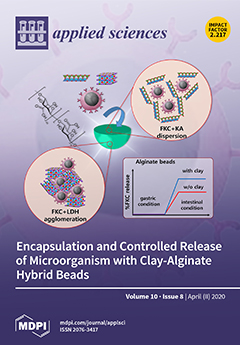Fungal virulence is multifaceted and dependent on multiple abiotic factors. The present study represents an investigation of the effect of one such abiotic factor, that of the grain type, on the insecticidal action of three entomopathogenic fungal species,
Beauveria bassiana (Balsamo) Vuillemin (Hypocreales:
[...] Read more.
Fungal virulence is multifaceted and dependent on multiple abiotic factors. The present study represents an investigation of the effect of one such abiotic factor, that of the grain type, on the insecticidal action of three entomopathogenic fungal species,
Beauveria bassiana (Balsamo) Vuillemin (Hypocreales: Cordycipitaceae),
Metarhizium anisopliae (Metschinkoff) Sorokin (Hypocreales: Clavicipitaceae) and
Isaria fumosorosea Wize (Hypocreales: Clavicipitaceae) on larvae of the three very common and destructive stored product pests: the khapra beetle (
Trogoderma granarium Everts) (Coleoptera: Dermestidae), the confused flour beetle (
Tribolium confusum Jacquelin du Val) (Coleoptera: Tenebrionidae) and the Mediterranean flour moth (
Ephestia kuehniella Zeller) (Lepidoptera: Pyralidae). To this end, we selected four different grains, i.e.,
Triticum aestivum L. (Poales: Poaceae),
Oryza sativa L. (Poales: Poaceae),
Arachis hypogaea L. (Fabales: Fabaceae) and
Vicia faba L. (Fabales: Fabaceae). Bioassays were carried out in the lab, where experimental grains were sprayed with 1 mL of conidial suspension (10
8 conidia/mL) from each isolate. Mean mortality, median survival time and weight loss of seeds were estimated for each species. Our results suggest that the differences in the efficacy of entomopathogenic fungi were dependent both on the isolates and the grain. The grain type as a factor is equally important to other abiotic factors.
Full article





